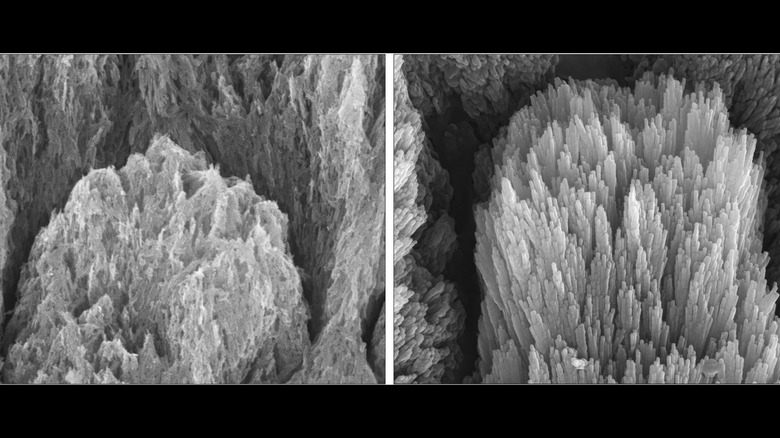Scientists Discovered A Gel That Can Restore Tooth Enamel
A new era of dental care may be dawning as scientists work to find revolutionary technologies to combat what has become a persistent global health crisis, ranging from AI-powered diagnostics and 3D printed prosthetics to autonomous robotic surgery. One major advancement has come out of a recent study at the University of Nottingham, where researchers have developed a gel that can regenerate tooth enamel, potentially leading to breakthroughs in dentists' ability to fight tooth decay. Published in the scientific journal Nature, the study claims this material is a protein-based gel that mimics the natural proteins that guide dental growth in infants. Researchers believe it is capable of regenerating demineralized and eroded enamel, a major step in not only counteracting active cavities but also strengthening a patient's teeth against any future degeneration.
Combatting enamel degradation is key to facing one of the world's most pressing unsung health issues: tooth decay. According to the World Health Organization, roughly 3.7 billion people suffer from oral diseases, constituting the most common health condition in the Global Burden of Disease index in 2021. Although most oral diseases are preventable, their prevalence is costly, painful, and often debilitating. Enamel decay, in particular, can cause a domino-effect of health issues, ranging from infection and tooth loss to diabetes and cardiovascular disease. Thus far, decay is typically treated with fluoride or remineralization techniques. While capable of relieving symptoms, these treatments are incapable of regenerating lost enamel. As such, the regenerative gel produced at UoN might become a first-of-its-kind treatment that proactively addresses lost enamel. Paired with advancements in stem cell dental regeneration, researchers are moving closer to addressing one of the world's most prevalent health issues.
Epinamel: a potentially revolutionary gel
Dentists apply the gel in the same manner as fluoride treatments, filling any cracks or holes before applying the calcium and phosphate ions from the patient's saliva to the tooth, encouraging growth in what is known as epitaxial mineralization. Amazingly, the new mineral integrates into the tooth's natural tissue, enabling it to retain properties found in healthy enamel. Preserving these unique structures has been a difficult hurdle for researchers looking to develop enamel-restorative materials.
As Abshar Hasan, lead author of the study, stated in a press release, "the material promotes the growth of crystals in an integrated and organized manner, recovering the architecture of our natural healthy enamel." To test the strength of this regenerated enamel, the team applied "real-life situations such as tooth brushing, chewing, and exposure to acidic foods," finding that it "behaves just like healthy enamel." This form of crystal regeneration can occur in as little as two weeks. Despite achieving these results on human teeth, the gel has yet to be tested on human subjects.
In addition to fluoride-style treatment, dentists can apply the gel topically, creating an enamel-like layer on top of the tooth to treat issues like hypersensitivity. Researchers praise the gel's clinical versatility, calling it an easy, safe, and rapid solution that can be translated into a variety of products. To bring their patented gel to market, the researchers founded the startup Mintech-Bio. According to a June 2024 equity offering announcement, the company looks to develop at least six dental products by 2030, the first of which will be their topical dental gel marketed under the moniker Epinamel. Mintech-Bio hopes its non-invasive treatment products will propel it to the forefront of a $3.3 billion industry.

